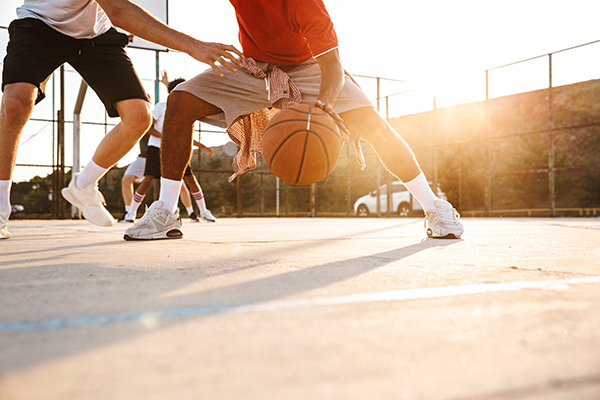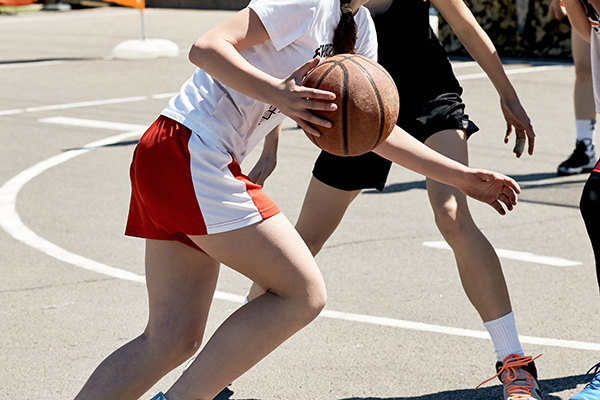Five Most Common Basketball Injuries
When people think of sports-related injuries, they often think first of injuries stemming from contact sports, such as football or hockey. However, basketball, though not considered a contact sport, results in its fair share of traumatic injuries as well. The quick movements inherent in basketball and the fast pace of the game contribute to a range of injuries commonly seen among basketball players that may require the care of an orthopedic physician.
Because basketball players are required to shift their weight effortlessly and make quick changes of direction, injuries to joints such as the ankle and knees are quite common. Some of the common injuries associated with basketball can be remedied with a little rest and minor care. Unfortunately, the more severe injuries that occur on the court can lead to a need for specialized treatment from an orthopedic surgeon in Atlanta. Keep reading to learn more about the 5 most common injuries associated with the sport of basketball.

Foot and Ankle Injuries
While the foot and ankle feature robust joints built to withstand a great deal of wear and tear, the stresses exerted on them by the lightning-quick directional changes and thrusting upward leaps can be too much for these joints to bear. Injuries to the lower extremities, including ankle sprains, as well as leg and foot fractures, are the most common class of injuries associated with basketball. Switching speed and changing direction can torque the angle excessively, leading to sprains. Feet get stepped on routinely in the melee below the basket after a shot, which can result in broken bones in the feet or sprains and tears. Basketball players should invest in well-fitting, high-topped basketball shoes. Shoes for playing indoor basketball are designed to prevent slipping. Ankle braces and taping may be helpful for those prone to ankle sprains. Though modern specialized footwear provides some protection against injuries to the foot and ankle, they can’t prevent all of them.
Hip and Thigh Injuries
While other sports rarely result in injuries to the hip or thigh area, the specialized movements inherent in basketball can put undue stresses on those parts of an athlete’s body. Basketball players pivot regularly from a stationary position, and that can strain the hips and the muscles surrounding the joint. Leaping and jumping heavily utilizes the muscles in the thigh and the hips, and that can lead to injuries as well. Some injuries stem from a lack of proper stretching and warm-up, while others such as deep thigh bruising, known as contusions, may be the result of the scrum beneath the basket. Hamstring strains and groin strains are common injuries to the hip and thigh area.

Knee Injuries
The knees, incredibly engineered for the workload they must carry, can fail under the stresses of basketball’s erratic, stop-start motions. These motions can stretch knee ligaments and strain the tissues surrounding the knee. Numerous ligaments can be damaged during basketball activities, such as the anterior cruciate ligament (ACL) and medial collateral ligament (MCL). These injuries can sometimes be treated with rest and non-invasive procedures if they are minor, but major injuries to the knee often require a surgical procedure to repair them. Basketball associated ACL tears are one of the most common types of traumatic knee injuries requiring treatment by an orthopedic surgeon.
Wrist and Hand Injuries
The basketball is handled exclusively with the hands, which results in injuries that occur in the hands and in the wrist. Sprained wrists can happen in the struggle to gain control of the ball and passing can sometimes result in jammed fingers. On a rare occasion, a player may break a wrist or finger, which can lead to a prolonged recovery period.
Head Injuries
While concussions are usually associated with contact sports, they can happen in basketball as well. Basketball must be played on a hard surface to facilitate dribbling, and when a player takes an unexpected spill to the court, the head can slam abruptly into the floor or cement. That can result in a mild to severe concussion, which represents a dangerous condition that can have effects echoing well after the game is over.
While many wouldn’t consider basketball a dangerous sport, basketball players are prone to injuries as a result of the moves necessary to play the game at a high level. To learn more about the most common injuries that occur in basketball, contact OrthoAtlanta at (770) 953-6929.

